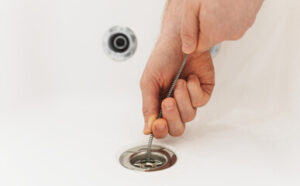Homeowners Insurance AZ may feel like one more item to check off a long list during homebuying. However, understanding the basics can help you find a policy that meets your needs at an affordable rate.
Insurance companies establish rates based on the likelihood of a claim being filed by that household. Certain renovations can lower premiums, as can being claims-free and belonging to a homeowners association.

Homeowners insurance is one of the most important investments a homeowner will make. Not only does it protect a home’s structure from damage, but it also covers personal belongings and liability for accidents that may occur on the property. However, when choosing an HO-3 policy, homeowners need to review the coverage limits, exclusions and deductibles carefully. This will ensure that they get the best possible value for their money and are adequately protected in the event of a loss or disaster.
HO-3 is the most popular type of homeowners policy in the United States, accounting for 78% of active policies. This package policy insures the dwelling and personal possessions, and offers several options to choose from. It can be purchased for traditional single-family homes, duplexes and condominiums. In addition, the policy can include loss of rent coverage and a variety of optional endorsements and riders.
When deciding on an HO-3 policy, it is important to consider the home’s value, personal property inventory and potential risks in the area. It is also important to determine whether a homeowner prefers actual cost value or replacement cost coverage for their personal belongings. Typically, HO-3 policies reimburse at actual cost value, which takes into account depreciation. By contrast, HO-5 policies reimburse at full replacement cost.
It is a good idea to compare HO-3 and HO-5 policies before making a decision. While both types of policies offer the same basic benefits, an HO-5 policy can be a better choice for some people. For example, HO-5 policies can offer more comprehensive open-perils coverage for personal belongings than HO-3 policies. This is especially important for expensive items like jewelry. It is also important to consider the reputation of the insurance provider when comparing policy options.
HO-2
A HO-2 policy is a step up from the less comprehensive HO-1 homeowners insurance policies. It insures your home’s structure and personal belongings, including clothing and furniture, against damage or theft. It also insures you against liability and loss of use. However, it doesn’t cover everything that a more comprehensive HO-3 or HO-5 policy would.
Unlike HO-1, HO-2 and HO-3 policies, which provide a name-perils approach to coverage, HO-5 policies are an open-peril policy for your personal property. This means that they will protect your belongings against any perils unless explicitly excluded in the policy. This provides you with more comprehensive protection, but comes at a premium.
If you’re interested in purchasing a HO-2 policy, contact an independent agent to find out more about the coverage available and what limitations might apply. The agent can also help you compare quotes from different insurers to get the best deal.
As a general rule, HO-2 policies insure your home’s physical structure against 16 named perils, while covering personal belongings on an open-peril basis. HO-2 also includes coverage for medical payments, which pays for expenses related to injuries sustained by guests at your home.
This type of coverage pays for things like ambulance rides, hospital stays and rehab costs. It may seem minor, but it can add up quickly if you have a large number of visitors who are injured. HO-2 policies typically limit their medical payments coverage to $100,000, so it’s important to consider other forms of coverage, such as an umbrella policy. It’s also worth considering flood or earthquake insurance, which aren’t covered by HO-2. This will require a separate policy to be purchased. This is an expensive but necessary investment if you want to protect your investments.
HO-8
The HO-8 is a modified homeowners insurance policy for homes that can’t qualify for a standard homeowners insurance policy. These are usually older homes or historic residences. Some of these properties may have ornate features that add style but can be costly to repair, as well as outdated electrical wiring or building materials that are no longer common or up to code.
These types of homes may not pass a four-point inspection or make the necessary upgrades to be considered for a standard homeowners insurance policy. The HO-8 form amends the loss settlement basis and insurance-to-value stipulation in order to help these homeowners get coverage. HO-8 policies often provide coverage based on the cost of replacing the home using modern construction methods, rather than the original value of the property.
Unlike a standard homeowners insurance policy, an HO-8 policy will only cover damage to your property from ten named perils. In addition, HO-8 policies only settle claims based on actual cash value, which is less than replacement cost because of depreciation. Lastly, HO-8 policies do not include flood insurance, which is sold separately.
Choosing the right home insurance policy is essential for any homeowner. If you have questions about what type of homeowners insurance is best for your situation, you should speak with an independent insurance agent. They will have insight into all of the factors that go into choosing a home insurance policy and can help you determine which policy is the best fit. They can also help you explore discounts that might lower your rates, such as for making safety upgrades to your home or by bundling your home and auto insurance.
HO-1
Homeowners insurance provides financial protection if the dwelling or other structures on your property are damaged. This type of insurance usually covers the cost to repair or replace the damage, as well as personal liability and additional living expenses coverage (up to certain limits).
The type of homeowners policy you need depends on how your home is occupied and the perils covered. The type of policy you choose also reflects the amount of coverage available, with a broad form policy covering more perils than a special form policy. Whether you own or rent, your mortgage lender requires that you have homeowner’s insurance.
In addition to covering the home, a standard policy may cover other structures on the property, such as garages or sheds. It also covers the contents of the home and personal belongings. It also includes personal liability for accidents that happen on your property and payment for medical expenses for others if they’re injured while visiting.
There are several types of home insurance, but most of them follow the same basic format. The Declarations section is typically on the first page, with a summary of the insured’s address and home structure, the dollar amount of coverage in the policy and the name of the insurance company that assumes the risk. The Definitions section is important, as it explains terms and conditions that are used throughout the policy.
Homeowners insurance generally isn’t tax-deductible, but some exceptions exist. Consult a tax professional for more information. Some policies offer a variety of additional coverages for an additional premium, including earthquake insurance and terrorism coverage. Some even cover the cost to live elsewhere if your home is destroyed or severely damaged by a covered peril.
HO-5
Like HO-3, HO-5 is a type of homeowners insurance that offers financial protection for your home and personal belongings. But it’s more comprehensive, with open-perils coverage that covers any risk unless explicitly excluded in the policy. This reduces the potential gaps that occur with other types of insurance, such as HO-3 policies.
Like other home insurance policies, HO-5 covers the structure of your house as well as other structures on your property such as detached garages. It also provides liability protection. However, it doesn’t provide flood coverage, which is usually covered by a separate flood insurance policy. HO-5 is often more expensive than other policies, and not all homes are eligible for it.
The biggest difference between HO-5 and other homeowners insurance policies is the coverage for personal belongings. HO-5 policies offer open-perils coverage for personal property, while HO-3 only offers named peril coverage. With a named perils policy, you can only claim damages from the listed risks in the policy.
Another key difference is that HO-5 policies typically include replacement cost coverage for personal property. This type of coverage reimburses homeowners for the actual costs to replace their items, which can be more than what they paid for them originally. Most other types of insurance only reimburse for the item’s depreciated value.
HO-5 policies may also include loss-of-use coverage, which reimburses you for expenses such as hotel and food costs if your house is damaged by a covered peril and cannot be occupied while repairs are made. They may also include sewer and water backup coverage, which reimburses you for damage resulting from sewage or water backing up into your home. They may also include scheduled personal property coverage, which offers higher limits for high-value items.








